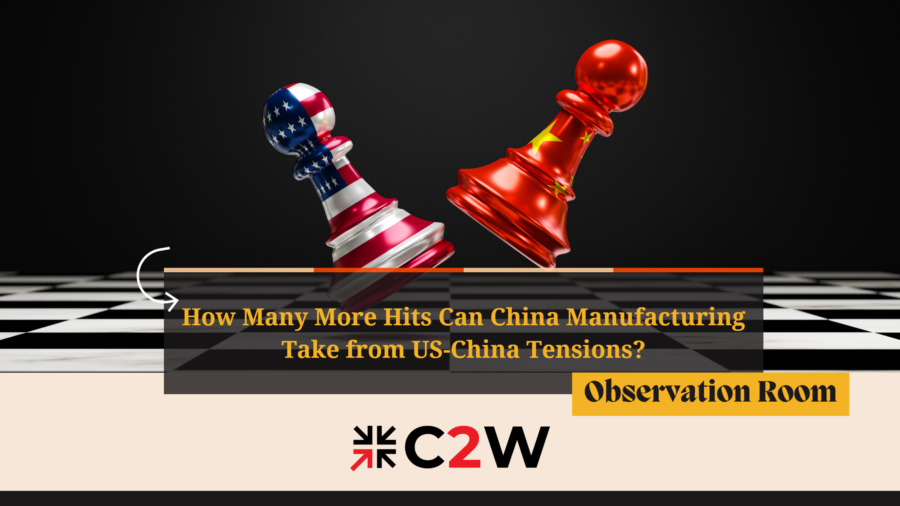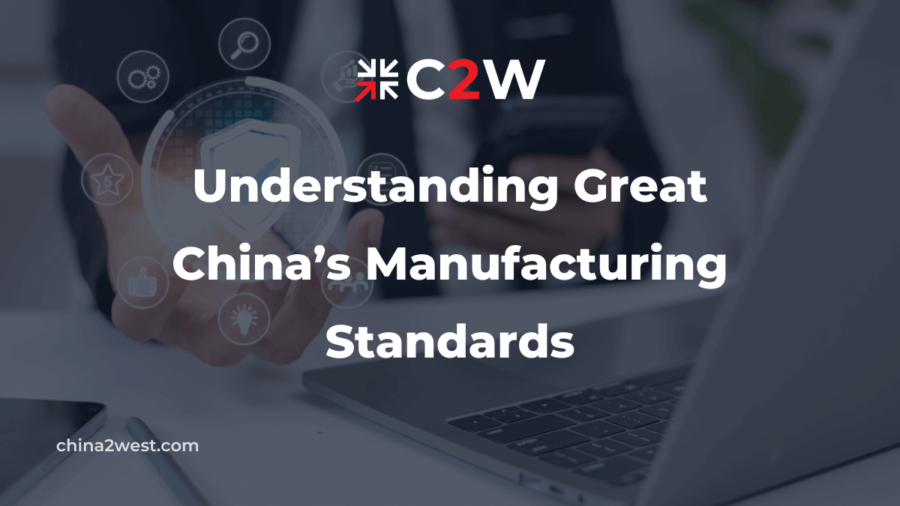Just when the world was enjoying a breath of slight relief for the seemingly easing tensions between China and the US, a surveillance balloon that had flown across the Pacific and reached the American airspace, unsolicited and under the radar, served more than enough to make a dramatic bipartisan disruption and result in a full-blown diplomatic crisis.
Then we realized, the short-lived peace was a mirage. The showdown is believed to continue for years to come.
Manufacturing is the easiest target of this battle, as reshoring has long been a highly strategic agenda for both the Biden administration and Trump.
Tech giants like Apple is on track to diversify its supply chain and lessen its reliance on China. Meanwhile, China is doing everything it can to hold onto its industrial dominance, due to its outward economic nature and reliance on exports for growth.
But is it sufficiently resilient for the constant hits?
How Will Politics Impact on Industrial Performance of China in 2023?
The ongoing rivalry between the United States and China has had a significant impact on the industrial performance of China.
The looming risk of recession and imposition of tariffs on Chinese goods by the United States has resulted in decreased demand for Chinese products, leading to a slowdown in China’s manufacturing sector, despite the recent boost from the elimination of China’s Zero-COVID policy.
In addition, recent political tensions between China and the United States, such as the last-minute cancelation of the state visit to China by Secretary of State Blinken due to the spy balloon fallout, have increased scrutiny on Chinese business practices.
Case in point, the Congress will vote very soon on the fate of TikTok in the US; Texas may even pass a law that prohibits all Chinese entities from buying land in the state, even including ordinary Chinese nationals with legal status amid fury from the Chinese community.
The security of intellectual property is also another hot topic regarding US-China trade relations, which is vital for businesses considering outsourcing to China. Just this last month, a former Chinese Chicago graduate was sentenced to 8 years for spying.
It has fed into the bipartisan accusation on China of stealing the US technology and intellectual property. In this current climate, businesses tend to take a second thought when it comes to China outsourcing.
Is China Manufacturing as Resilient as We Hope?
It is not the first time China is in a highly unfavorable position. However, recent events have put this resilience to the test, raising questions about the future of China’s manufacturing industry.
One event that has sparked concern is Ford’s decision to build an electric vehicle factory in the United States in partnership with Chinese battery maker CATL. While this move signals a shift towards localization and reducing reliance on Chinese manufacturing, it also raises questions about the competitiveness of Chinese battery and concerns from China over being leveraged too excessively to win over the global market.
Furthermore, China’s rumored aid to Russia with deadly weapons against Ukraine has triggered potential sanctions from the US and its allies. These geopolitical tensions have already resulted in disruptions to global supply chains, including in the semiconductor industry, which has further highlighted the risks associated with relying heavily on China for manufacturing.
In addition, the ongoing US Debt Ceiling debate has the potential to further impact China’s manufacturing industry. As the US struggles to reach a resolution on the debt ceiling, global markets have already experienced turbulence, and further economic instability could have ripple effects on China’s exports and manufacturing industry.
While these events have raised concerns about China’s manufacturing resilience, it is important to note that China has shown resilience in the face of previous challenges, such as the US-China trade war and the COVID-19 pandemic. The Chinese government’s efforts to promote domestic consumption and the country’s shift towards high-tech industries have also been viewed as potential factors that could support the manufacturing industry’s continued growth and resilience.
However, it is clear that the landscape of global manufacturing is changing rapidly, and China’s position as the dominant player may not be as secure as it once was. As other countries in Southeast Asia, such as Vietnam and Thailand, become more attractive destinations for outsourcing manufacturing, it is becoming increasingly important for China to adapt and innovate to maintain its competitive edge.
While recent events have put China’s manufacturing resilience to the test, it is important to consider the broader context of the industry and the country’s efforts to adapt to changing conditions. The global manufacturing landscape is constantly evolving, and China’s ability to adapt and innovate will be crucial for maintaining its position as a key player in the industry.
2023 Outlook: How Much Current Events Factor Into Decision-Making of Outsourcing Manufacturing to China?
With tensions between the United States and China, recent events have raised questions about the future of Chinese manufacturing. How much do current events play into the decision-making of outsourcing manufacturing to China?
The Chips Act, which aims to bolster domestic semiconductor production and reduce dependence on foreign sources, is one such event that could impact the outsourcing decision-making process. The United States is concerned about its dependence on Chinese manufacturing for key technologies, such as semiconductors, which are essential components in everything from smartphones to automobiles. The Chips Act provides funding to domestic manufacturers to develop new technologies and expand production capabilities. This legislation has the potential to reduce reliance on Chinese manufacturing and incentivize businesses to consider domestic options.
Another factor impacting the decision to outsource manufacturing to China is the recent move by Apple to diversify its supply chain away from China. The tech giant has reportedly shifted a portion of its production to other countries, such as India and Vietnam, in an effort to reduce its dependence on Chinese manufacturing. This shift could have implications for other businesses considering outsourcing to China, as it highlights the potential risks associated with relying heavily on one country for manufacturing.
On the other hand, German Chancellor Olaf Scholz’s visit to China last November with industrial investment in Chinese manufacturing, such as BASF SE’s new world-scale Neopentyl Glycol (NPG) plant in Zhejiang Guangdong, indicates that some companies are still confident in Chinese manufacturing. BASF SE’s investment shows that China remains an attractive market for foreign investment, and that businesses are still willing to outsource manufacturing to China despite the current geopolitical tensions.
Businesses must carefully weigh the risks and benefits of outsourcing manufacturing to China in light of current events. While the decision ultimately depends on a variety of factors unique to each business, it is clear that recent events have raised questions about the future of Chinese manufacturing and the risks associated with relying heavily on one country for production.
Is Southeast Asia Really Ready to Replace China?
Given the uncertainty surrounding China’s manufacturing industry, many businesses have begun to look to Southeast Asia as a potential alternative. Countries such as Vietnam, Thailand, and Indonesia have all made significant investments in their manufacturing infrastructure and have positioned themselves as attractive outsourcing destinations.
However, there are challenges to outsourcing to Southeast Asia. Infrastructure and logistics remain underdeveloped in many areas, which can lead to delays and increased costs. In addition, many of these countries lack the skilled workforce and technological expertise that China has developed over the years.
Furthermore, there is a limit to how much Southeast Asia can replace China as a manufacturing hub. China has built up a massive manufacturing ecosystem over the years, with a highly skilled workforce, advanced infrastructure, and a deep network of suppliers and logistics providers. While Southeast Asia has made progress, it is still far behind China in terms of manufacturing capacity and expertise.
The events of the past year have highlighted the challenges and uncertainties of outsourcing to China. While the country remains a major player in the manufacturing industry, businesses are increasingly looking to diversify their supply chains and explore alternative outsourcing destinations. However, the limitations and challenges of these alternatives mean that China is likely to remain a key manufacturing partner for many years to come.
But a right manufacturer in China can help you greatly reap the benefits of Chinese manufacturing while navigating through the deep water. One like C2W, with an international and diverse team that can communicate with the East and the West and have the best design and engineering experience for over 18 years in Asia. Contact us today!


